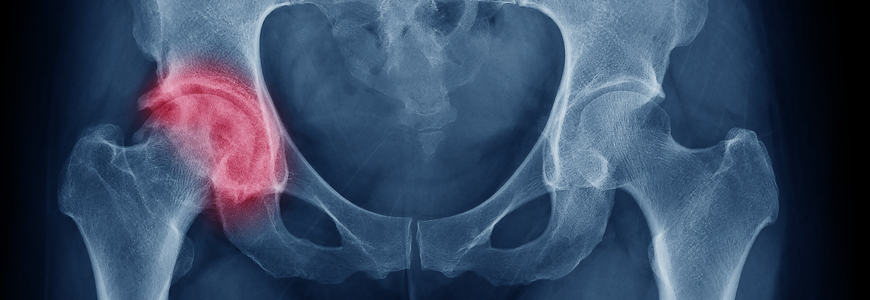Transitioning away from using the typical setup for hip arthroscopy, all Duke hip specialists have adopted as best practice an innovative postless distraction system, which has been shown to cause fewer potential postoperative complications. Here, Duke orthopaedic surgeons and hip arthroscopists Brian D. Lewis, MD and Steven A. Olson, MD, compare the standard post and postless distraction systems and introduce an application of the new technique in a combined hip arthroscopy and periacetabular osteotomy (PAO) procedure.
Comparing Old vs. New Distraction Systems
The traditional method for performing hip arthroscopy to address labral tears, cartilage pathology, or impingement morphology is done by placing a large foam pad between a patient’s legs to decrease the amount of pressure on the hip.
“The standard traction post is not designed for long-term traction, but it frequently requires patients to be under traction for as long as one or two hours to allow a surgeon to get exposure to the joint,” Olson says. Notably, the typical setup with a standard post can result in temporary but devastating pudendal nerve palsy, perineal skin complications, and sexual dysfunction in men and women, explains Lewis.
The newer postless system for hip arthroscopy was brought to Duke in 2016 by hip arthroscopist Richard C. Mather III, MD, who used the Guardian Table (Stryker Medical, Kalamazoo, MI). Soon after, Lewis began using the Hana orthopaedic surgery table (Mizuho OSI, Tokyo, Japan) and a soft pink positioning pad (Xodus Medical Inc., New Kensington, PA) for postless hip arthroscopy.
The “pink pad” is used to create stability between the patient’s body and the pad, which enables the surgeon to use the table to apply traction to the leg during surgery. The traction pulls against the patient’s body weight on the pink pad, resulting in distraction of the bones of the hip. The Guardian table used by Mather works in the same way, with its own version of a tabletop pad that provides stability for the patient’s body. Tally E. Lassiter, Jr., MD, MHA, also uses the postless traction table.
Olson explains in more detail how it works: “As the patient lays on top of the pad, their bodyweight sinks into the foam, and the adhesion between the pad, patient, and bed keeps them in place so we can pull traction without a counter post to do the surgery. It can also involve positioning the bed slightly at an angle, adds Lewis.
The introduction of postless hip distraction with these tables is a significant advancement for the care of patients who require hip arthroscopic surgery, says Olson, adding that the lack of the counter post or “perineal post” makes the experience of arthroscopic hip surgery better for the patient.
Although the new technique makes it faster and easier for the surgeons to perform the procedure, it doesn’t necessarily decrease a patient’s recovery time, Olson notes. “The hip capsule is incredibly stiff and tough compared to other joints, so you need a lot of traction across the hip to do the procedure,” he says. “Even though it’s a minimally invasive procedure, it takes longer to recover from a hip arthroscopy than from an arthroscopy of another joint.”
However, Lewis adds that there is a benefit to reducing patients’ pain levels and initial recovery time. “With our postless technique, we have had none of the previous problems, and our patients seem to have less pain and seem to be doing better early on in the first couple of weeks out from surgery,” he says.
Olson notes that the postless distraction system is slowly advancing around the country, but many surgeons are still used to doing hip arthroscopy the traditional way. “Some arthroscopists feel very strongly that a post is important to them, but at Duke, we have found no difference in our ability to do the procedures,” he says.
Combining Postless Hip Arthroscopy with PAO
Patients who require either hip arthroscopy or PAO typically have some underlying intra-articular pathology, Olson notes. For example, the underlying diagnosis of dysplasia is often associated with labral tears, requiring the use of both open and arthroscopic hip preservation techniques.
Applying the postless technique to this type of case, Lewis and Olson detail their approach to concomitant hip arthroscopy and PAO in a November 2019 Arthroscopy Techniques paper. Using a single table, single drape, postless distraction system, the combined procedure does not increase the operative time of the PAO and makes exposure easier, with less bleeding and better-defined tissue planes due to the hydrodissection from the arthroscopy fluid, the authors note.
“At other centers, surgeons who do PAOs also typically do open hip surgeries, but the additional skillset required to do arthroscopy doesn’t always overlap in the same providers,” Olson says. “At Duke, our hip specialists are able to do both open hip osteotomy and hip arthroscopy, which helps streamline the surgical treatment of already complicated conditions.”
